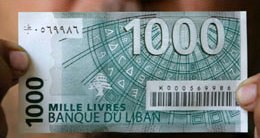By Ghassan Karam
Whenever a country is subjected to some turbulence; social political, economic or natural; its economic performance is bound to suffer. This has always been the case, all throughout history and it still is. Just witness the economic pain that was inflicted on the United States and on Europe as a result of the subprime problem, the failure of regulations and the extended leveraging indulged in by most actors. This has also been the case in Japan that suffered from the twin natural disasters of an earth quake and a tsunami when it was barely out of the “lost decade” debacle.
The Arab uprisings have not been more merciful. It has left in its wake a weakened Tunisian economy, an Egyptian economy that is caught in a painful down spiral, a Libya that is in the midst of a civil war and economic decline and a Syria that would most likely be hit by a severe economic contraction due to the ongoing social strife and the ensuing economic insecurity that accompanies it.
Lebanon appears to have escaped, so far, the political upheavals plaguing the region not because it is not in need of reform but because its citizens have freely chosen the reigning corrupt system of government that they are free; at least in theory; to change if they choose to do so. But the Lebanese do not have much to gloat about. The economy is not in shambles yet but it is, at best, in an unenviable position. Unemployment is high, social spending is meager, capital inflows are decreasing, the central governmental budget deficit is growing, exports are diminishing, the tourist sector projections are rather gloomy and the sovereign debt is growing both in absolute terms and as a percentage of the GDP.
In spite of all the above very few of our politicians devote much of their time to a serious discussion of the economic policies and priorities that Lebanon needs to adopt in order not to avoid falling into the economic abyss that the country is hurtling towards. The hubris of the politicians led them to build castles on the sand. They are all proud of the relative economic performance of the country in the last 2-3 years although that success is illusory and rests on very weak fundamentals.
Obviously the ability to finance the national debt is arguably the single most important issue facing the country. The lessons from the problems of Greece, Portugal and Ireland amongst many have not been learned by the Lebanese politicians whose expectations to manage the national debt are based on nothing else besides wishful thinking.
The easiest way to look at the burden created by the national debt is to determine its relative size to the GDP. Lebanon has the disadvantage of having an extremely high debt/GDP ratio which has increased recently. How difficult is it to project the size of this burden over the next decade? A detailed projection would require building a complicated macroeconomic model. But one can get a feel for what is likely to happen by simply looking at two variables, the average interest rate paid on financing the current debt and the average expected nominal rate of growth in the economy.
I have worked out for you three different scenarios. All what you have to do is choose the scenario that you think is most likely to occur.
My projections are based on a ten year cycle. This means that the following figures are projections for the year 2020 based on 2010. Another very conservative assumption is that the rate of interest paid on the debt will average only 7%. Most probably it will be much higher. Another starting assumption is that at the end of 2010 the GDP was 60,240 billion LL while the national debt amounted to 79295 billion LL. We will also assume that the Lebanese government will not be in a position to reduce the principal outstanding but will not borrow except to pay for the interest.
Sovereign Debt 2010:LL 79295 billion
Sovereign Debt 2020: LL 155,807 billion
GDP 2010:….LL 60,240 billion
GDP 2020…..LL142,500 billion (assumes annual average growth rate of 9%)
GDP 2020…..LL118,500 billion(assumes annual average growth rate of 7%)
GDP2020…..LL98,000 billion (assumes an annual average growth rate of 5%)
As you can see from the above it is crucially important for the economy to experience a nominal growth rate that is larger than the average rate of interest paid on the national debt. Any growth rate that falls short of the rate of interest is simply disastrous. Note that the 2010 Debt/GDP =132 and the rate will decrease to 109 if the economy can achieve an average rate of growth of 9% per annum but 159 if the average rate of growth is to be only 5% per annum. Obviously at an average rate of growth of 7% the ratio will not change.
For those that think that 9% or more is likely I have lovely plots of land for sale in the center of Beirut.
A podcast of the above will be posted to ramblings11.mypodcast.com on Wednesday May 25, 2011
Leave a Reply
You must be logged in to post a comment.